
Illustrative Math Alignment: Grade 6 Unit 1
Expressions and Equations
Lesson 10: The Distributive Property, Part 2
Use the following Media4Math resources with this Illustrative Math lesson.
| Thumbnail Image | Title | Body | Curriculum Nodes |
|---|---|---|---|
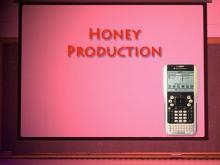
|
VIDEO: Algebra Applications: Variables and Equations, 2 | VIDEO: Algebra Applications: Variables and Equations, 2
TopicEquations DescriptionThis segment explores the impact of colony collapse disorder on honey production using statistical data. It introduces box and whisker plots and the calculation of mean as statistical tools to analyze honey yields. Key vocabulary includes colony collapse disorder, box plot, and mean. Applications include modeling bee population declines and their broader ecological and agricultural implications. |
Applications of Equations and Inequalities, Variables and Unknowns and Variable Expressions |
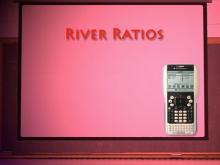
|
VIDEO: Algebra Applications: Variables and Equations, 3 | VIDEO: Algebra Applications: Variables and Equations, 3
TopicEquations DescriptionThe video investigates the geometry of river meanders using the concept of the meander ratio, calculated as the ratio of a river’s sinuous length to its straight-line length. It uses a TI-Nspire calculator to simulate river paths and compute ratios. Key vocabulary includes meander ratio, sinuous length, and geometric modeling. Applications highlight the mathematical modeling of natural phenomena and the occurrence of pi in nature. |
Applications of Equations and Inequalities, Variables and Unknowns, Variable Expressions and Applications of Ratios, Proportions, and Percents |
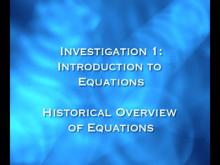
|
VIDEO: Algebra Nspirations: Variables and Equations, 1 | VIDEO: Algebra Nspirations: Variables and Equations, 1
TopicEquations DescriptionThis video covers the historical evolution of equations, the role of variables, constants, and parameters, and introduces linear and quadratic equations. Key vocabulary includes symbolic algebra, parameter, variable, and constants. Real-world applications are introduced through general problem-solving using linear equations, like solving for unknowns in financial contexts. |
Applications of Equations and Inequalities, Variables and Unknowns and Variable Expressions |

|
VIDEO: Algebra Nspirations: Variables and Equations, 2 | VIDEO: Algebra Nspirations: Variables and Equations, 2
TopicEquations DescriptionIn this Math Lab explore the linear relationship between the circumference and diameter of a circle. Relevance to the Topic: This video is a valuable resource for understanding the topic of Equations. It connects theoretical concepts with practical applications, offering insights that make learning engaging and relatable. |
Applications of Equations and Inequalities, Variables and Unknowns and Variable Expressions |
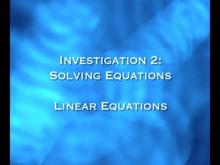
|
VIDEO: Algebra Nspirations: Variables and Equations, 3 | VIDEO: Algebra Nspirations: Variables and Equations, 3
TopicEquations DescriptionExpanding on Part 1, this video demonstrates solving linear equations algebraically and dynamically using TI-Nspire technology. Applications include walk-a-thons and bike-a-thons, illustrating linear relationships in practical contexts. Key vocabulary includes linear equation, function, and symbolic representation. |
Applications of Equations and Inequalities, Variables and Unknowns and Variable Expressions |

|
VIDEO: Algebra Nspirations: Variables and Equations, 4 | VIDEO: Algebra Nspirations: Variables and Equations, 4
TopicEquations DescriptionIn this Math Lab, use a visual model to find the square of a binomial. Relevance to the Topic: This video is a valuable resource for understanding the topic of Equations. It connects theoretical concepts with practical applications, offering insights that make learning engaging and relatable. |
Applications of Equations and Inequalities, Variables and Unknowns and Variable Expressions |
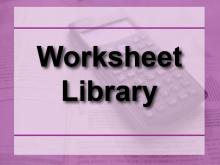
|
Worksheet: Properties of Operations | Worksheet: Properties of Operations Use the properties of operations to multiply numbers. Note: The download is a PDF file.Related ResourcesTo see additional resources on this topic, click on the Related Resources tab.Worksheet LibraryTo see the complete collection of Worksheets, click on this link. |
Multiplication Facts |